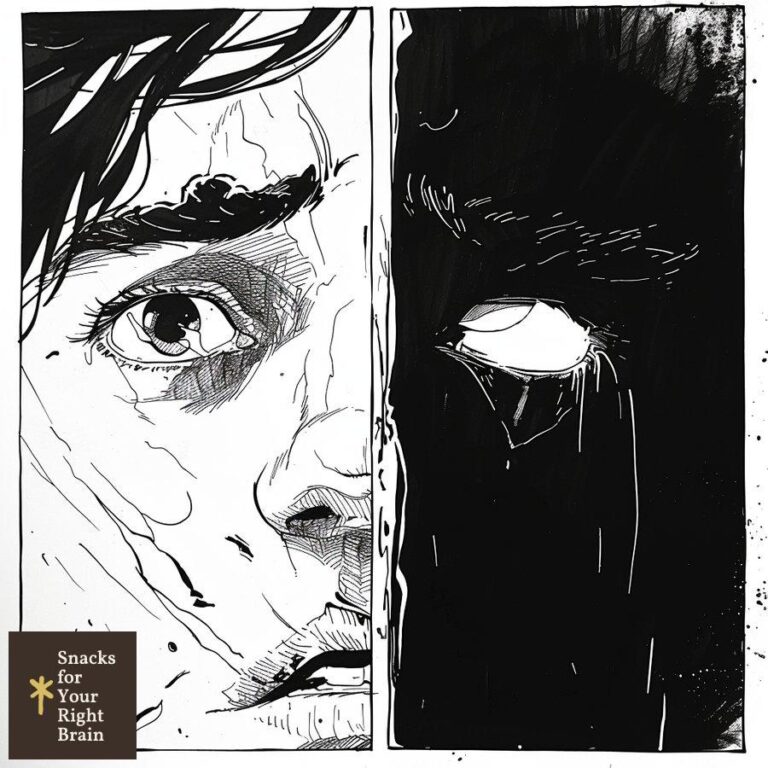What Is the Point of View in a Short Story
What is point of view in short stories?
Point of view (POV) in short stories refers to the perspective from which the narrative is told. It determines who is telling the story and how much information the narrator has access to. The choice of POV shapes the tone, voice, and overall experience for the reader. A well-chosen POV can draw the reader into the story and make the characters more relatable, while a poorly executed POV can be confusing or distancing.
There are several key elements that define a story’s POV:

- Narrator: The voice telling the story, whether it’s a character in the story (first-person) or an outside observer (third-person)
- Tense: The time frame in which the story is told, usually either past or present tense
- Omniscience: How much the narrator knows about the characters’ thoughts, feelings, and actions
- Reliability: Whether the narrator is trustworthy or has biases, gaps in knowledge, or an agenda
The POV sets the stage for the story and determines what information the reader has access to. A first-person narrator can only report on their own experiences and thoughts, while a third-person omniscient narrator can delve into the minds of multiple characters. The POV also affects the reader’s emotional connection to the story – a close third-person POV can create intimacy, while a distant third-person POV may feel more objective.
Choosing the right POV is a crucial decision for short story writers. It requires considering the story’s themes, characters, and desired effect on the reader. The POV should serve the story and enhance the reader’s experience. A well-executed POV can elevate a good story into a great one.
How does point of view affect storytelling and reader experience?
Point of view has a profound impact on how a story is told and how the reader experiences it. The choice of POV shapes the narrative voice, the information available to the reader, and the emotional connection to the characters.
Narrative voice: The POV determines the tone, style, and personality of the narrator. A first-person POV allows the narrator’s unique voice to shine through, while a third-person POV may have a more neutral or omniscient tone. The narrator’s voice sets the mood and shapes the reader’s perception of events.
Information access: The POV dictates how much information the reader has access to. A first-person narrator can only report on their own experiences and thoughts, while a third-person omniscient narrator can delve into the minds of multiple characters. Limited POVs create mystery and suspense, while omniscient POVs allow for a more comprehensive understanding of the story world.
Emotional connection: The POV affects the reader’s emotional connection to the characters. A close third-person POV can create intimacy, while a distant third-person POV may feel more objective. A first-person POV allows the reader to identify with the narrator, while a third-person POV may create more emotional distance.
Narrative arc: The POV can influence the story’s narrative arc. A first-person POV may be more subjective and focused on the narrator’s personal journey, while a third-person POV may have a broader scope and focus on external events. The POV can also affect the pacing and structure of the story.
Ultimately, the choice of POV is a crucial decision that shapes the entire storytelling experience. A well-chosen POV can enhance the story’s themes, characters, and emotional impact, while a poorly executed POV can be confusing or distracting. Short story writers must carefully consider the POV and how it serves the story and the reader.
What are the main types of point of view used in short fiction?
There are several main types of point of view used in short fiction:
-
First-person POV: The story is told by a character who uses “I,” “me,” and “my” pronouns. This POV allows the reader to get inside the narrator’s head and experience the story through their eyes. It can create a strong sense of intimacy and immediacy, but also limits the reader’s access to information outside the narrator’s knowledge or perspective.
-
Third-person limited POV: The story is told by an outside narrator who uses “he,” “she,” and “they” pronouns. The narrator focuses on the thoughts, feelings, and actions of a single character, allowing the reader to get close to that character’s experience. This POV creates a sense of intimacy while still maintaining some distance.
-
Third-person omniscient POV: The story is told by an all-knowing narrator who can delve into the thoughts, feelings, and actions of multiple characters. This POV allows for a more comprehensive understanding of the story world and can create a sense of objectivity. However, it can also feel more distant from the characters.
-
Second-person POV: The story is told using “you” pronouns, addressing the reader directly. This POV is less common in short fiction but can create a sense of immediacy and involvement for the reader. However, it can also feel gimmicky or distancing if not executed well.
-
Multiple POVs: Some stories use a combination of POVs, switching between different characters or perspectives. This can create a more complex and layered narrative, but requires careful execution to avoid confusion or unevenness.
The choice of POV depends on the story’s themes, characters, and desired effect on the reader. Each POV has its own strengths and weaknesses, and writers must carefully consider which one best serves their story.
How can writers choose the right point of view for their short story?
Choosing the right point of view for a short story is a crucial decision that can make or break the narrative. Here are some key factors to consider when selecting a POV:
-
Character development: Consider which character or characters are most central to the story. A first-person or third-person limited POV can create a strong emotional connection with the protagonist, while a third-person omniscient POV can allow for deeper exploration of multiple characters.

-
Narrative scope: Think about the story’s scale and focus. A first-person POV may be more suitable for a personal, introspective story, while a third-person omniscient POV can handle a broader, more epic narrative.
-
Tone and style: The POV should match the overall tone and style of the story. A first-person POV with a distinctive voice can create a strong sense of personality, while a third-person POV can maintain a more neutral or omniscient tone.
-
Thematic focus: Consider the story’s central themes and how the POV can support or enhance them. For example, a story about identity and self-discovery may benefit from a first-person POV, while a story about the human condition may work better with a third-person omniscient POV.
-
Reader experience: Think about how the POV will affect the reader’s experience. A first-person POV can create a strong sense of identification and immediacy, while a third-person POV can maintain a sense of distance and objectivity.
-
Experimentation: Don’t be afraid to experiment with different POVs. Some writers find that the story reveals itself through the process of writing, and the POV may change as the narrative evolves.
Ultimately, the choice of POV should serve the story and enhance the reader’s experience. A well-chosen POV can elevate a good story into a great one, while a poorly executed POV can be confusing or distracting. Writers should carefully consider the factors above and be willing to experiment to find the POV that works best for their story.
What techniques can improve point of view writing in short stories?
Writing a compelling point of view in short stories requires mastery of several key techniques. Here are some of the most important ones:
-
Establish the narrator’s voice: The narrator’s unique voice should shine through in the language, tone, and style of the narration. Use specific word choices, sentence structures, and idiomatic expressions to create a distinct personality.
-
Maintain consistency: Once you’ve established the POV, stick to it throughout the story. Avoid head-hopping (switching between characters’ perspectives within a scene) or inconsistencies in the narrator’s voice or knowledge.
-
Show, don’t tell: Rather than telling the reader what the narrator is thinking or feeling, show it through their actions, dialogue, and sensory details. This creates a more immersive and engaging reading experience.
-
Limit omniscience: Even in a third-person omniscient POV, it’s best to limit the narrator’s knowledge to what’s necessary for the story. Too much omniscience can feel intrusive or overwhelming.
-
Use sensory details: Describe the world through the narrator’s senses to create a vivid and immersive experience. What does the narrator see, hear, smell, taste, and feel?
-
Reveal character through POV: The narrator’s POV should reveal something about their personality, biases, and worldview. How do they interpret events, and what does that say about them?
-
Experiment with POV shifts: While consistency is key, some stories may benefit from carefully placed POV shifts. Use these shifts to create contrast, reveal new information, or deepen the reader’s understanding of the characters.
-
Avoid common POV mistakes: Steer clear of head-hopping, inconsistencies, info dumps, and other POV pitfalls that can confuse or disengage the reader.
By mastering these techniques, writers can craft compelling and immersive POVs that draw the reader into the story and create a lasting emotional impact.
What are common point of view mistakes to avoid in short fiction?
When it comes to point of view in short fiction, there are several common mistakes that writers should avoid:
-
Head-hopping: Switching between characters’ perspectives within a scene or paragraph. This can be confusing for readers and disrupt the flow of the story.
-
Inconsistencies: Maintaining a consistent POV throughout the story is crucial. Avoid contradictions in the narrator’s voice, knowledge, or perspective.
-
Info dumps: Providing too much background information or exposition through the narrator’s POV. This can slow down the pacing and feel like a lecture.
-
Telling instead of showing: Relying too heavily on telling the reader what the narrator is thinking or feeling rather than showing it through their actions and dialogue.
-
Unreliable narrators: Creating a narrator who is untrustworthy or has significant gaps in knowledge without making this clear to the reader. This can be a powerful technique but requires careful execution.
-
Gimmicky POV choices: Using a POV that feels like a trick or a stunt rather than serving the story. For example, a second-person POV that feels forced or a multiple POV structure that is uneven or confusing.
-
Overuse of sensory details: While sensory details are important for creating a vivid POV, too many can become overwhelming or distracting for the reader.
-
Lack of character development: A POV that doesn’t reveal anything about the narrator’s personality, biases, or worldview. A compelling POV should give the reader a sense of who the narrator is as a person.
By avoiding these common mistakes and focusing on creating a consistent, engaging, and revealing POV, writers can craft short stories that draw the reader in and leave a lasting impression.
How have famous authors used point of view effectively in short stories?
Many famous authors have used point of view as a powerful tool to shape their short stories. Here are a few examples of how some of the greats have employed POV effectively:
Ernest Hemingway’s “Hills Like White Elephants”: Hemingway uses a third-person limited POV to focus on the American man’s perspective in this story about a couple waiting for a train. By limiting the POV to the man, Hemingway creates a sense of distance and objectivity, allowing the reader to draw their own conclusions about the couple’s relationship and the unspoken issue they are discussing.

Shirley Jackson’s “The Lottery”: Jackson’s famous story about a small town’s disturbing annual ritual is told from a third-person omniscient POV. This allows Jackson to reveal details about the town and its inhabitants gradually, building a sense of unease and foreboding. The omniscient POV also creates a sense of the town’s collective consciousness and the way traditions can become ingrained in a community.
Alice Munro’s “The Bear Came Over the Mountain”: Munro’s story about a couple dealing with the wife’s Alzheimer’s disease is told from a third-person limited POV that shifts between the husband and wife. This allows Munro to explore both characters’ perspectives and the way their relationship changes as the wife’s condition progresses. The POV shifts also create a sense of the couple’s shared history and the way memory shapes our identities.
Flannery O’Connor’s “A Good Man Is Hard to Find”: O’Connor’s darkly comic story about a family’s encounter with a dangerous criminal is told from a third-person limited POV that focuses on the grandmother. This allows O’Connor to reveal the grandmother’s flaws and contradictions, creating a complex and unsettling portrait of a character who is both sympathetic and disturbing.
These are just a few examples of how famous authors have used point of view to shape their short stories. By carefully choosing a POV that serves the story’s themes and characters, these writers have created some of the most memorable and influential works of short fiction.
What exercises can help writers master point of view in short fiction?
Mastering point of view in short fiction takes practice and experimentation. Here are some exercises that can help writers hone their POV skills:
-
Rewrite a scene from multiple POVs: Take a short scene from a story you’re working on and rewrite it from the perspective of different characters. How does the tone, focus, and information change with each POV shift?

-
Analyze published stories: Choose a short story you admire and analyze how the author uses POV. What are the strengths and limitations of the chosen POV? How does it shape the story’s themes and characters?
-
Write a story with an unreliable narrator: Create a narrator who is untrustworthy or has significant gaps in knowledge. How can you reveal the narrator’s unreliability to the reader? What effect does this have on the story’s themes and reader experience?
-
Experiment with second-person POV: Write a short scene or story using a second-person POV. How does this POV affect the reader’s experience and engagement with the story? When might this POV be effective, and when might it feel gimmicky or distancing?
-
Write a story with multiple POVs: Craft a short story that shifts between multiple characters’ perspectives. How can you ensure a smooth transition between POVs? What are the benefits and challenges of this approach?
-
Focus on sensory details: Write a short scene or story focusing on the narrator’s sensory experiences. How can you use sight, sound, smell, taste, and touch to create a vivid and immersive POV?
-
Revise for POV consistency: Take a story you’ve written and revise it to ensure a consistent POV. Look for any instances of head-hopping, inconsistencies, or POV slips. How does maintaining a consistent POV affect the story’s clarity and impact?
By practicing these exercises and experimenting with different POV approaches, writers can develop a stronger understanding of how point of view shapes short fiction. With time and dedication, mastering POV can become a powerful tool in any writer’s toolkit.






